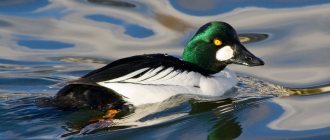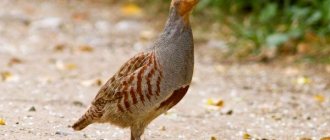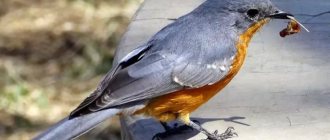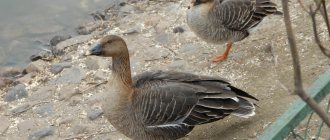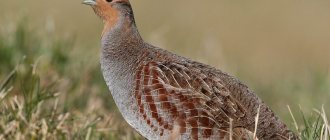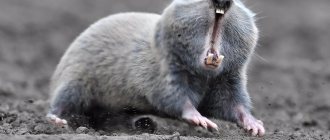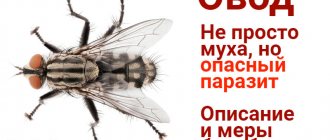Bird name
In Russia, this bird is called the Great Grebe, or Great Grebe. Belongs to the grebes family. A hundred years ago, when Dahl compiled the dictionary, the great grebe belonged to the loon family. The word grebe is of Turkic origin.
In the Uzbek language there is a word sho'ng'in, which means to dive, to submerge. In Tatar - shomgan - plunged, dived. The great grebe is also called the crested pochard or crested grebe. It was nicknamed the toadstool for its tasteless, smelly meat, reeking of rotten fish. There are about two dozen species in the Pogankov family.
Why is the great grebe called the Great Grebe?
This bird is a representative of the order Grebes.
But it has nothing to do with poisonous mushrooms. This bird was nicknamed Big Grebe because its meat has an unpleasant specific smell. It is almost impossible to eat it, as the taste leaves much to be desired. This feature saves the great grebe from hunters. During those periods when duck hunting is officially permitted, no one encroaches on the life of this feathered creature.
Description and features
Despite its unattractive name (Grebe), the Great Grebe is a charming bird. The snow-white belly smoothly turns into reddish sides. The inside of the wings is also snow-white, which becomes obvious when the bird flaps its wings. The back and comb on the head are black.
The head is set on an elongated, slender neck. Unlike ducks, the grebes have a slightly elongated, pointed beak, which they use to catch fish. The eyes are crimson-red. It stays afloat with dignity, one might even say it’s important.
But attentive and focused. After all, the great grebe has to see a fish swimming in the river, and at the same time not become food for the kite. The great grebe is especially charming during the mating season. A dark cherry collar appears on her neck, and a comb on her head. By doing this, the birds let them know that they are ready to mate.
The grebe's paws are olive-green, short, strong, located closer to the tail. It is this structure that allows it to take a vertical pose while standing on the water. Paws without membranes, so characteristic of most waterfowl.
Instead, there are hard leather folds on the sides of each finger. Three fingers point forward, and the last one looks back. The grebe's legs do not work like those of a duck or loon. She pulls them back, and works only with the movable part of the lower limbs, reminiscent of propeller blades. It should be noted that the limbs of the toadstool are very mobile and flexible. When the grebe's paws get cold, she lifts them above the water and spreads them to the sides, like a gymnast doing the splits.
Beautiful and swift afloat, the legs of the great grebe are poorly adapted to land. The grebe moves along the shore slowly and clumsily. The body, while walking on the ground, assumes a vertical position and resembles a penguin.
It is interesting that during the mating dance on the water, she runs extremely fast, quickly moving her paws, and enjoying the process. The grebe runs through the water when it tries to take off, or during mating games. The great grebe is smaller than a duck. Weighs from 6 to 1.5 kilograms. The female differs little in color from her partner, but is noticeably smaller in size.
By the way, in most bird families and genera, males are distinguished by bright, eye-catching colors, in contrast to females, whose plumage has more uniform shades. The length of the folded wing of a drake is on average 20 cm. The wingspan in flight reaches 85 cm. The body length is about half a meter.
How is a male different from a female?
The plumage color of individuals of different sexes is almost the same. In both females and males it is dark brown, and the head and lower body are white, beige or pale yellow. On the neck there is a peculiar “collar” of a reddish-chestnut hue. But you can see it only in the warm season. In summer, this bird can also be easily recognized by the colored feathers growing on its head, which in their shape resemble “horns”. With the onset of cold weather, they become shorter, and the “collar” disappears without a trace.
The sex of this unusual creature can only be determined by its size. The average length of the bird is 45-40 centimeters, and it weighs approximately 0.5 - 1.6 kilograms. Males are much larger than females. This is especially noticeable in the size of their wings, the length of which is more than 20 centimeters. Their scope is also quite large, it is 85-90 centimeters.
Kinds
There are approximately 15-18 species of grebes known in nature. The grebe bird is the most famous of the grebes living in Russia. Dahl in his dictionary mentioned the crested grebe, the horned grebe, the ruby-throated grebe, and the long-eared grebe. In the modern classification, grebes are named differently.
They were either renamed or became extinct within a century and a half. By the way, the number of species of these birds has actually decreased over the last century. This is due to human economic activity. The table shows some of the living species of grebes and their distinctive features.
Grebes that feed on fish are larger and have longer necks than those that feed on insects or shellfish.
| Types of grebes | Habitat | External species differences | Size, weight | What does it eat? |
| Pied-billed or Caroline | Both American continents, from southern Canada. This bird is not found in Arctic Northern Canada or Alaska. | In summer, a black border appears on the elongated, pointed beak, which is how it got its name. The main color of the feathers is dull brown. | The body is elongated by 31-38 cm, weight 300-600 g. Wingspan up to 60 cm. | Mainly aquatic insects |
| Small | The southern part of Eurasia and almost the entire African continent. | The back is dark brown, almost black, the plumage of the belly is silvery. The beak is chocolate-dark with a light tip. In summer, part of the head and neck are painted chestnut with a copper tint. By winter, the chestnut plumage disappears. | Weight approximately 100-350 g. Wing length is 9-11 cm. Egg size is 38-26 mm. | Insects, their larvae, mollusks, for which it dives to the very bottom of the reservoir, small fish |
| Grey-cheeked. In Russia and Belarus it is under state protection and is included in the Red Book. | It lives on almost all continents of the northern hemisphere, choosing forest zones. For nesting, it prefers ponds with dense vegetation near the banks. | The back of the neck, back, and part of the wing are blackish-brown. The feathers on the belly and cheeks on the head are grayish-white. The front part of the neck is orange-rusty in color. | The body is 42-50 cm long. Weight is 0.9-1 kilogram. The length of the wings in flight is 80 -85 cm. The eggs are 50x34 mm. | It feeds on insects, roaches, and fry. |
| Red-necked or horned | In Eurasia and North America. The inhabitants of the subarctic south and temperate north are migratory. | In autumn and winter it has a light gray even color. Only on the head is a dark gray cap and the front of the neck is white. In spring and summer, the Rufous-necked Grebe changes: reddish-rufous feathers appear on the head, neck and sides. | Body length - 20-22 cm. Weight -310-560 g. The average egg size is 48x30 mm. | It feeds on insects and, in winter, small fish. |
| Black-necked or long-eared | It lives on all continents except Antarctica and Australia. Birds living in the north fly south for the summer. | In spring and summer, the head and neck are black with a charcoal sheen. Near the eyes, like eyelashes, there are yokes - golden feathers, clearly visible against the charcoal background. By autumn, the plumage fades and acquires a gray tint. The back is black-brown, the sides are rusty, the belly is light. | Body length – 28-34 mm; Weighs 300-600 g. The average egg size is 46x30 mm. | Mainly arthropods. |
| Clark's grebe | Lives mainly on the west coast of the North American continent | Clark's grebe is significantly larger than the Russian great grebe . The chicks hatch uniformly, dirty white in color, which also distinguishes them from other types of grebes. Adults have a gray-brown back and a snow-white belly. | One of the largest in the grebes family. Body length 55-75 cm, weight 700-1700 grams. Wingspan -90 cm. | It pierces its prey with its beak, like a dagger. Feeds on fish. |
Great grebe in the Red Book
Despite the tasteless meat, the number of birds is not very large. It is considered a rare species and is listed in the Red Book.
Main causes of extinction
For a long period of time, bird skins along with feathers were used to make jewelry and women's hats. As a result, the number of representatives of the species has decreased so much that the grebes are in danger of extinction.
At the end of the nineteenth century, the fashion for jewelry of this kind passed, and the population began to gradually increase. Today, great grebes are rare, but there is no threat of complete extinction. Grebes are not hunted because the meat is not suitable for food. Sometimes they die after being caught in fishing nets.
Current population situation
Habitat: Europe, Kazakhstan, Central Asia, the south of Central and Western Siberia. The number is uneven and depends on the habitat.
Birds of the Grebe family are distributed throughout the planet, except Antarctica. Some species have a very small habitat - one body of water.
Are protective measures required?
In recent decades, the number of grebes has gradually increased. To increase the population, artificial reservoirs are created that are suitable for birds. Birds are also protected by law.
Where and how does the great grebe live?
The Great Great Grebe has settled almost throughout the entire territory of the Eurasian continent. It also occurs:
- in Australia,
- New Zealand,
- on the coasts of East and Southern Africa.
Northern inhabitants lead a migratory lifestyle. Birds living in subtropical and tropical climates lead a sedentary lifestyle. Great grebes and other representatives of grebes do not live only in the far north and Antarctica.
Great grebes settle on lakes and ponds, choosing fresh water bodies. The short legs of the toadstool are poorly suited for walking on the ground. She also flies rarely, but very well and quickly. Capable of long-distance flights.
Before takeoff, she runs on the water, helping herself with the flapping of her strong wings. But still he prefers the water element, where he feels great. The grebe also cleans and lubricates its feathers on the water, lying down on one side or the other. The bird's plumage has excellent water-repellent properties.
For nesting, the great grebe chooses water bodies with a lot of vegetation: reeds, reeds. And of course, for the grebe it is important that there is a slow current in the reservoir. It would be better if it didn’t exist at all.
Great grebes build their nests right on the water
The great grebes make their homes around bodies of standing water in the steppe or taiga zone.
Birds build their nests directly on the surface of the water. The floating houses are supported by thickets of reeds, and sometimes even the bottom of the lake. This arrangement of housing allows the feathered creature to protect itself and its offspring from enemies. In general, for a comfortable life, these creatures need an open space where the sun's rays freely penetrate. It is also important for birds to live near places where there is enough food. We also recommend reading:
The largest dog breeds What is domestication in animal husbandry Why you should get a cat: reasons voiced by scientists Euthanasia of animals
What does it eat?
The great grebe feeds mainly on fish, and as you can see in the photo, it is far from small. Supplements the diet with frogs, mollusks, aquatic insects, and very little - algae. The great grebe has excellent eyesight and can spot fish deep in the water.
Capable of diving to a depth of 4 meters, pressing its wings to its body and working only with its paws. The great grebe dives with a sharp, rapid leap, head down. In this case, the body rises above the water like a candle and immediately goes under the water strictly vertically, or perpendicular to the surface of the water. The great grebe has been observed to eat its own feathers.
This may seem strange if you don't know the reason. The great grebes swallow the fish whole. And to prevent sharp fish bones from damaging the bird’s intestines, soft feathers serve as a kind of buffer that protects the bird’s body from injury. Perhaps the great grebe eats algae for the same purpose. To improve the digestion of tough, difficult-to-digest food, the great grebe swallows small pebbles.
Interesting Facts
There are many interesting facts about this bird today. Here are some of them:
- There is the smallest representative of this species, the lesser grebe. She is so small that her weight does not exceed one hundred and fifty grams;
- Representatives of this species have been observed eating their own feathers. In the process of eating food, these birds swallow the fish whole, and, as is known, the bones of the fish are quite sharp and can damage the throat, stomach and intestines of the bird. Therefore, in this case, feathers protect the bird from this by enveloping the fish bones;
- The bird is able to dive to quite great depths for its prey. In the same way, she protects herself from predators by diving into the water and emerging far from the place where the predator was circling;
- Small chicks dive with their parents on their backs, hiding under the wings, where an air cushion is created for a while, allowing the babies to breathe;
- The great grebes are the largest representative of grebes in Central Europe.
Come again
Listen to the voice of the great grebe
The audio tag is not supported by your browser. Close
Reproduction
- Mating season
During the mating season, the great grebe develops additional plumage, which makes the grebe in the photo especially attractive. Moreover, both the female and the male grow feathers. A comb appears on the head.
The outer feathers are longer, the middle feathers are shorter. This is why this scallop is perceived as horns. A luxurious collar of dark orange or cherry burgundy feathers is formed around the neck. For this comb and collar, the bird received the nickname crested.
The mating season for grebes begins in April-May. Females scream loudly. Their guttural sound is heard as “corr” “kua”, croix.” By this they attract males - future partners.
The male swims to the female with a gift - caught fresh fish, which the female immediately eats. While the female is devouring the gift, the male prepares a feather for her to snack on. In smaller, insectivorous species of grebes, the male brings a bunch of algae to his partner, apparently as a sign of readiness to lay the foundation of a future nest.
The choice of a partner is made by the female during a ritual dance. The dance of the great grebe is a delightful sight. First, they perform several synchronized movements with their heads and necks. It is surprising that the partner exactly repeats the movements of the female. Then both birds rise above the water, assuming a vertical position.
Raising their wings a little, they run synchronously through the water, quickly moving their paws. Obviously, in the dance, the partner seeks to prove to the female that he is no weaker than her and will be a good spouse for the entire time they are raising offspring. During the dance, the birds manage to “come to an agreement” and understand each other.
Then the grebes begin building a nest from the vegetation that is in the reservoir. The male takes an active part in construction. He delivers building material for the nest:
- remnants of reeds,
- branches of trees growing on the shore that have fallen into the water.
- algae, leaves.
- reed stems.
The pair tries to build a nest closer to the reeds. And it doesn’t catch your eye, and it won’t float away if the wind picks up. The reeds will hold. The floating habitat must be sufficiently spacious and strong. It is 30-60 cm in diameter. Its height reaches up to 85 cm.
The nest of the great grebe is mounted on a floating peat that has found itself in the water, or on a pile of accumulated dead vegetation. Sometimes the base is fixed on the water between the stems of aquatic plants. When the nest is ready for laying eggs, the grebe allows the male to mate. It happens right on the water.
If several families of grebes have settled in one body of water, they build nests at a distance from each other, always more than a couple of meters. There may be nests of other birds, such as seagulls, nearby.
- Hatching eggs and producing offspring
The female lays up to 7 snow-white eggs. Over time, the shell darkens, becomes brown-orange, or light brown. This happens because the plants decompose on the water, and during the decomposition process they release heat, which is so necessary for the testicles when the female swims away to feed.
The male remains near the female for the entire incubation period. He guards the nest, warning uninvited guests with a cry. Hatching lasts 24 days. But since the grebe rushed, giving 1, rarely 2 eggs every day, the ducklings did not hatch immediately, but over the course of several days.
And while the mother grebe hatches the remaining eggs, the father is busy feeding and raising the emerging offspring. The babies hide in their father's feathers from danger and warm up there if they have managed to freeze in cold water. From the first day of their appearance, they are adapted to swimming.
Interestingly, while incubating the eggs, the male continues to drag leaves and twigs of aquatic plants into the nest. When the female rises from her eggs to stretch and snack, she covers the eggs with available plant material. This is done so that the eggs are not found by predators in the form of impudent crows or harriers.
Nature took care of the grebe chicks. They are born striped, which helps them blend in with the reeds. And from above they become invisible to predators. The hatched chicks are ready to swim and dive. The first days they spend a lot of time hiding on their backs, under the wings of their parents.
If a grebe notices danger, it dives deep into the water with its babies and emerges far from the place where the predator was circling. The pressed wings prevent the ducklings from falling off their backs.
Water does not immediately penetrate under the wings; an air cushion remains there for some time. Gradually, the babies’ lungs will get stronger, and they will learn to dive on their own, spending a long time under water.
Until the kids learn to hunt, their parents feed them. If one of the parents fishes, swimming far from the nest, the other guards the young at this time. The babies swim near their father or hide on his back.
By the end of summer, the ducklings will grow up and get stronger. They retain their striped plumage until they reach adulthood. When young animals acquire the color of adult birds, this indicates that they are ready for procreation and mating.
Mating rituals of great grebes
These birds spend their time outdoors, making them easy to observe, and their spectacular courtship displays are the subject of one of the earliest in-depth studies of avian behavior.
The most common maneuver is the “head shake,” in which members of a pair swim toward each other and shake their heads from side to side. This ceremony is interrupted by the "pulling" of feathers. From the outside, the grebes seem to be plucking the feathers on the back of their chosen one, but in reality they are just making movements with their heads. Then come more complex manifestations of sympathy. The male and female dive for underwater plants, tear out the stems, emerge and quickly swim towards each other. They meet chest to chest, rise out of the water, shake their heads from side to side, still holding the weed in their beaks.
After choosing a mate and completing the colorful courtship ritual, when the birds have already created a union, they begin to lead a solitary lifestyle and lay eggs.
Great grebe's nest
Lifespan
Great grebes live approximately 10-15 years. There are known cases when this bird lived up to 25 years in captivity. Her enemies are birds of prey and wild animals. On the ground, the great grebe is especially vulnerable to enemies, since it cannot take off from the ground, and runs very poorly on its short legs.
While incubating eggs, the great grebe is pursued by a crow and a reed harrier. When the female leaves the eggs in search of food, these predators destroy the grebe's nests and steal the eggs. This is why the drake has to guard the roost in the absence of its partner. Swimming chicks are often kidnapped by carnivorous fish.
The life expectancy of grebes is fundamentally influenced by human neglect of ecology and the environment. The discharge of hazardous industrial waste into water bodies reduces the population of birds and the years of existence allotted to them by nature.
Behavior in the wild
Migratory birds fly rarely and reluctantly. But the Great Grebe is an excellent swimmer and diver. The grebe is very agile when in its natural element. She deftly catches small and medium-sized fish.
Great grebes live in pairs, and sometimes form entire groups. This makes it easier for them to defend themselves from enemies, of which there are many in the wild. The main ones are the marsh harrier, as well as mammals and birds of prey that live in forests.
Great grebes build their nests in thickets on the surface of water bodies in order to remain invisible and inaccessible to aggressors.
Habitats of the great grebe
This unusual bird species is native to Western and Eastern Europe. They are also found in England and Ireland, and can sometimes be seen in East Africa and New Zealand. In Russia they can be found in the southern part.
Grebes breed in freshwater bodies of water with extensive vegetation. They need it to build nests. There is a separate subspecies of these birds that is found in Asia and most of Europe and prefers milder climates. Therefore, they migrate from the cold part of the world to warm regions. They spend the winter at their main place of residence, in freshwater lakes, and mostly lead a sedentary lifestyle.
LIFESTYLE
The Great Grebe is a freshwater bird. It can be found almost throughout Europe in lakes, ponds, rivers, artificial reservoirs and swamps. As a rule, the great grebe settles in water bodies with dense coastal vegetation. In the northern regions, the great grebe is a migratory bird. These migratory birds arrive at nesting sites located closer to the south as early as February. Most grebes fly away for the winter in November, although birds from the northern regions often remain in the breeding area until the water bodies are covered with ice. Regular seasonal migrations under normal conditions are the only opportunity for flight for the great grebe. The great grebe flies by rapidly flapping its wings, with the bird's neck extended forward and its legs along the body.
Nest
Great grebes build a floating nest from dead vegetation (mainly reeds and reeds), it is up to 60 cm in diameter and 80 cm in height, and its underwater height exceeds half a meter. The nest can be floating, but more often its base rests on the bottom of shallow water or is anchored on several reeds, which serve as a kind of frame for it. The birds place their nest in reed thickets to protect them from waves, but so that the parents can freely swim to the nest and, in case of danger, dive into the water. The Great Grebe's nest is always wet, which affects the entire egg incubation regime. After all, wet material has a high heat capacity. When the grebe is absent, the cooling rate of its wet nest is 4.5 times less than, for example, the dry nest of a black-headed gull. Usually the nests are located singly, but in lakes where there are a lot of fish, small colonies can be found.
